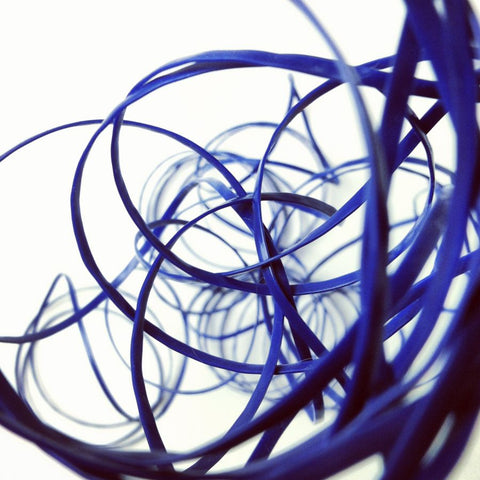
The art of deciphering manuscripts : paleography
Mathias MeyerTo share

Interviews with a student in paleography and a specialist in the field.
The explanations of a student in paleography
What is paleography?
Paleography is the science of deciphering manuscripts and aims to enable the reading and transcription of documents and books. According to Ana Regina Berwanger and João Eurípedes Franklin Leal, paleography “can be considered art or science. It is science in theory. It is art in practical application. However, above all, it is a technique”. A technique that requires talent and practice.
Why do we need paleographers?
Reading handwritten documents becomes a challenge in the contemporary world, where we are used to dealing with the circulation of print and electronic text.
In recent years, paleography has assumed immense importance, not only within the university, but in society in general. Although paleography is a rigorously scientific discipline within the curricula of some courses, its traditional field of action has expanded.
How does the paleographer work?
It is necessary that the paleographer (person dedicated to paleography or skilled in paleographic reading) use criteria for reading manuscripts, in order to produce the most reliable transcripts possible. Paleography deciphers the graphic signs of the text (letters, numbers, abbreviations, etc.), that is, the extrinsic characters of the text. However, paleography constitutes a very relevant science for textual criticism, since it helps to establish the genuine form of a text for which it is necessary to decode the writing in which its testimonies are recorded (Cambraia, 2005, p. 23-24).
In order to correctly read and transcribe the Ipsis litteris document, as indicated, it is necessary to understand the production logic of these manuscripts and their society. Reading, interpreting, contextualizing and reflecting is what is expected from the paleographer. The objective of transcribing the norms is to standardize the paleographic transcriptions, to standardize them and facilitate research.
What are the books to learn about paleography?
- CAMBRAIA, CN (2005) Introduction to textual criticism. Sao Paulo: Martins Fontes.
- FLEXOR, MHO (1991) Abbreviations: manuscripts from the 16th to 19th centuries. 2nd ed. São Paulo :
Publisher UNESP/Edições do Estado de São Paulo Archive. - LEAL, JEF (2011) Glossary of Paleography and Diplomatics. Rio de Janeiro : Luminaire : Multifocus.
- BERWANGER, AR; LEAL, JEF (2008) Notions of Diplomatic Paleography. 3 ed. Santa Maria, Publisher of the Federal University of Santa Maria.
And the view of an expert in paleography
Ana Caroline, could you introduce yourself?
My name is Ana Caroline Carvalho Miranda, I have a degree in History from the Federal University of Ouro Preto, I am currently doing an academic master's degree from the Graduate Program in History at the same institution, with an emphasis on the History of Minas Gerais in the colonial period. I have experience in Paleography of the 18th, 19th and 20th centuries.
How did you become a paleographer?
I had contact with paleography for the first time in 2012 through an academic research of scientific initiation at the university. I worked with manuscripts from the 18th century from the archive of the Casa Setecentista de Mariana - MG, in a project about the presence of Africans in Mariana. Soon after, I continued to research documents of the same nature, but for the locality of Pitangui, which was another village of the Captaincy of Minas Gerais in the 18th century. In 2015 I entered the master's degree, my research is on the same topic as the project on Pitangui and I extended the time frame to the beginning of the 19th century, using more font typologies in addition to notarial ones. As you can see, my trajectory is as a historian and archivist. Within these two fields of study, because I had access to a wide range of documents, I also became interested in paleography, and since then I have carried out work for the general public that needs transcriptions of manuscripts.
What is a paleograph?
The paleographer is the one who reads, transcribes and understands manuscripts from the ancient, medieval, modern and contemporary periods. The paleographer also actively participates in the process of analyzing the construction of written language over the years, its modifications and what is preserved. Paleography is an analytical instrument of the historical document, and therefore we must be attentive to the dating, origin, authenticity and construction aspects of the source. It can also be used by other sciences.
What do you like most about this profession?
I identify with and enjoy working as a paleographer mainly because I love History. It is very exciting to unravel what possibly happened at a certain time in the past. It is an illuminating craft and one of the most important current mechanisms for investigating and recovering the actions of men in time.
What are the main qualities of a paleographer?
A good paleographer tends to educate himself about the craft he performs through the main works dealing with paleography and diplomacy. In the same way, it studies the way of writing of the chosen period, the nature of the source to be analyzed and and identifies the false and true documents. The paleographer needs to make the reader's bridge to the ancient text in a clear way.
How can our readers get in touch with you?
I carry out transcription of official and personal/private documents of various types, upon request through my contact: anacarolinec625@gmail.com
